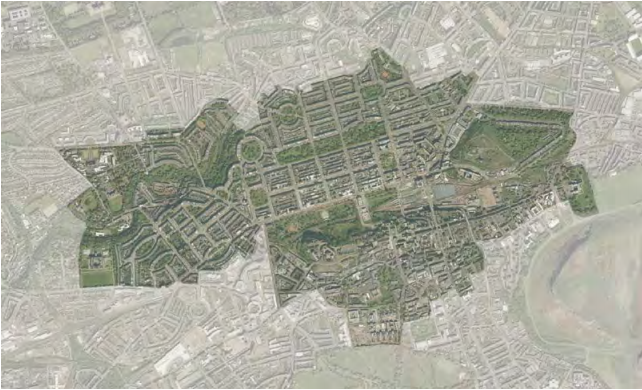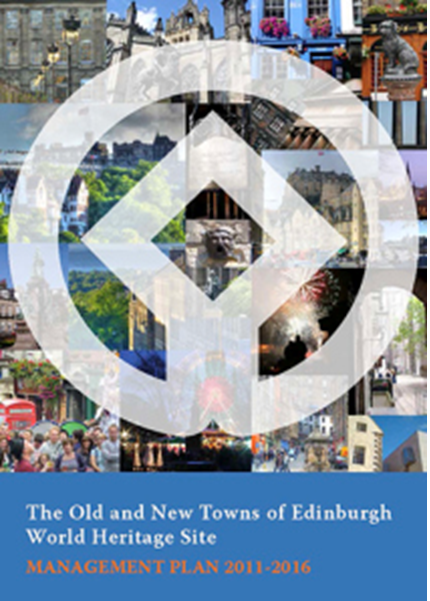Reviewing the Management Plan for the Old and New Towns of Edinburgh World Heritage Site
Feedback updated 1 Nov 2016
We asked
Members of the public were invited to have their say in how the Old and New Towns of Edinburgh World Heritage Site should be run.
The survey was based around 14 key themes: awareness of the World Heritage status, maintenance of buildings and streets, moving around, natural space, city centre economy, guidance, new developments, housing, visitor management, sense of belonging, facilities, sense of control, safety, livability.
You said
Some of the celebrated strengths (scoring 5/7 or more):
- Natural Space
- Identity and belonging
- Livability
- Feeling Safe
- Facilities and amenities
Overall, the respondents are very satisfied with Edinburgh’s city centre as a place to live and work. The parks and green spaces were very highly rated and the city centre is felt to be safer than most the one’s of other comparable capitals. More lighting at night and a reduction of the traffic speed was suggested to create an even greater sense of safety in the area.
Edinburgh’s strong visual identity and its years of history were thought to be contributing to a real sense of pride and belonging to the city. The respondents felt generally positive about the level of amenities and facilities the city centre offers, as there is a wide range of offer and there are easily accessible.
Areas of debate (scoring 3 to 4/7):
- Housing
- Moving around
- City centre economy
The cost of living, the city centre economy and the ease to move around were topics that generated a lot of comments.
Affordable housing is a key issue and it was felt that the city centre should be providing more affordable housing options to retain its resident population in the city centre. And while the compactness of the city is seen as an asset, many said that traffic still dominates pedestrian and cycling movement. Opinion was divided as to whether the Royal Mile achieved enough for its residents as it is thought to be too geared towards tourists.
Recognisable challenges (Scoring 3/7 or lower)
Out of the 14 initial themes, the 6 themes that scored the lowest or engendered the most negative comments were:
- Care and Maintenance of buildings and streets
- Control and Guidance
- Contribution of new developments to city centre
- Influence and sense of control
- Visitor Management
- Awareness of World Heritage Site
When asked to think about the level of care and maintenance of buildings and streets, residents felt that there is still a lot to be done. Issues such as general litter and the quality of road and pavements were mentioned. Making sure that planning laws were enforced is critical for the respondents. Recent new developments divided opinion, the respondents are hoping for better quality and more innovative architecture that is respectful of the Old Town and New Town’s architectural context.
The influence and sense of control is one area that could be improved as the respondents felt they were being asked to participate but failed to see the impact of this participation.
The balance between visitor and resident needs was a source of numerous comments. The Royal Mile attracts the largest number of tourists but is seen to not deliver enough for the resident’s population. While despite the fact the awareness of the city centre’s World Heritage site status was rated highly, respondents were mostly unaware of what it meant and what the benefits were.
We did
We will use this feeback to inform the review of the Old and New Towns of Edinburgh World Heritage Site Management Plan (2017-2022).
For more information, see the planning blog (https://planningedinburgh.com/category/world-heritage/ )
Overview
It’s time to review the Management Plan for the Old and New Towns of Edinburgh World Heritage Site.
This survey gives you the chance to let us know how well you think the Old and New Towns of Edinburgh work as a place to live, work and visit.
 Old and New Towns of Edinburgh World Heritage Site boundary
Old and New Towns of Edinburgh World Heritage Site boundary The Old and New Towns of Edinburgh were awarded World Heritage Site status in 1995 by UNESCO (United Nations Educational Scientific and Cultural Organisation). This was based on the contrast of these two distinct historic areas, each of exceptional historic and architectural interest. The difference between the medieval Old Town and the 18th century planned Georgian New Town creates a unique urban structure.
What is the Management Plan?
The Old and New Towns of Edinburgh World Heritage Site Management Plan identifies what is significant about the World Heritage Site, recognises challenges and threats, and sets out policies to preserve and enhance the Site. The plan was prepared by Edinburgh World Heritage, the City of Edinburgh Council and Historic Environment Scotland.
Over the last 10 years two management plans have been delivered (2005-2010, 2011-2016) and it is now time to develop the third management plan.
This third management plan will cover the period from 2017 to 2022. As with the previous plans, it will be prepared by a partnership of City of Edinburgh Council, Historic Environment Scotland and Edinburgh World Heritage with interest groups and individuals.
Why your views matter
Being able to identify the strengths and weaknesses of the World Heritage Site as a place to live, work and visit is key for the successful management of the site.
Communities can assess these qualities by participating in the survey.
To complete the survey, please click on the link below in the 'Give Us Your Views' box. Alternatively, you can also download the survey and send your comments to worldheritage@edinburgh.gov.uk.
What happens next
A summary of the consultation results will be published on this page in the autumn of 2016. The feedback received will be analysed and considered by the project team and used to decide on actions to take forward in the plan.
A summary of the results will be produced which will say how suggestions have been used.
The final version of the Management Plan will be formally endorsed by the partners in the summer of 2017.
Areas
- All Areas
Audiences
- Amenity groups
- Architects/designers
- Built heritage groups
- Businesses
- Carers
- Children & Young People
- Civil and public servants
- Community councils
- Developers/investors
- Development management statutory consultees
- Development planning key agencies
- Education institutions
- Elected Members
- Employees
- External councils
- Homeless People
- Housing associations
- Jobseekers
- Landowners
- Lesbian, gay, bisexual people, Transgender people (LGBT)
- Libraries
- Licence holders
- Low income households
- Men
- Minority Ethnic groups
- Natural heritage/open space
- Neighbourhood partnerships
- Older people
- Parents/carers
- People with disabilities
- People with long term conditions
- Planning consultants
- Professional bodies
- Professionals
- Residents
- Road users
- Scottish Government departments
- Services/utilities
- Students
- Taxi Licence holders
- Teaching/Educational staff
- Transport groups
- Visitors
- Voluntary sector/volunteers
- Women
- Young people
Interests
- Area regeneration
- Conservation
- Land and property
- Local plans and guidelines



Share
Share on Twitter Share on Facebook